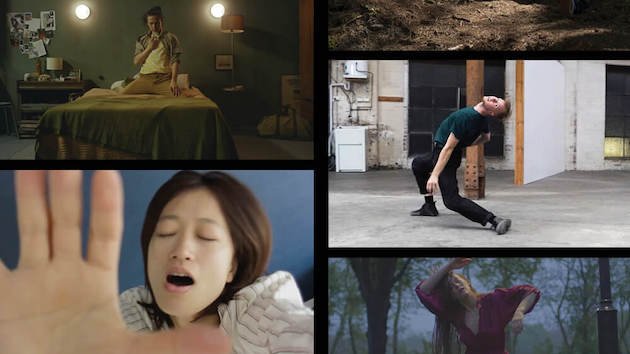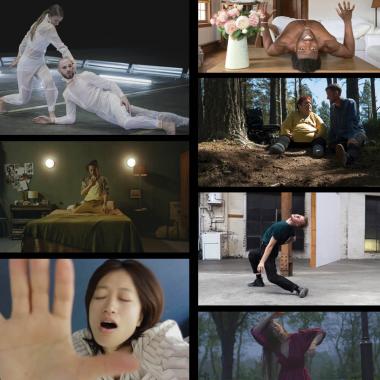
The Broad Stage presentation of Dance Camera West’s 2021 Best of the Festival dance films from around the world almost makes a Bay Area person want to relocate to Los Angeles. Imagine sitting in a (safe, socially distanced) gathering of fellow dance appreciators and indie film buffs while watching impressive movers from around the world splash across an enormous screen. Offered in two different dance programs, 16 vital works gathered in one month in 2021 — from 260 festival entries submitted by over 35 countries — bring visceral energy and sophisticated cinematography to the east parking lot on Santa Monica College’s Bundy Campus on Jan 30 and 31.
Each film is a world, United States, or L.A. premiere. The festival ramps up online performance with the move to an outdoor venue and large-screen format. That doesn’t mean audiences in distant locations or unable to attend the drive-in event are cast adrift. While previewing the films, it’s clear —even on a computer screen — that dance cinematography has matured and technology has evolved to impressive levels during the last five years: The digital experience is surprisingly kinesthetic, dynamic, and immersive.
Among the highlights are Program B’s ID, directed and choreographed by Cass Mortimer Eipper, of Australia. The dancers of Transit Dance Company occupy a vast, grimy, industrial-warehouse-like space, countering the cold, abstract environment and hard surfaces with rippling, heated undulations, tightly packed or siloed formations, interpersonal thrusts and punches that morph into empty-space embraces and more. It’s the one of the rare films to catch the experience of actually being inside a dance, as opposed to simply viewing it from the exterior.
The filming of director-choreographer Garry Stewart’s The Circadian Cycle took place in various locations in South Australia on the Traditional Lands of Aboriginal and Torres Strait Islander Peoples. The film expands or reimagines in digital format choreography from Australian Dance Theatre’s mainstage work, The Beginning of Nature. Charting the daily cycle of nature, the cinematography combines sweeping panoramic drone-shots and dramatic close-ups. Stewart’s sense of space and production elements that include sticks, sand, wind, dirt, water, leaves, and other organic materials are never embellished but also never hidden from the camera.
From Program A, Earth Odyssey, (directed by Adi Halfin with choreography by the dancers and music written, composed, and performed by Asaf Avidan, is intensely urban. Halfin and Avidian asked dancers isolated by the coronavirus lockdowns to film themselves in confinement. Dancing on rooftops, in kitchens, hallways, and sitting rooms, the dancers improvised or choreographed their movements in response to Avidian’s music. The experience is incredibly rich, as the eye selectively focuses on dancer and movement or empty spaces or the furniture or other features of the environment each dancer chooses for their story about hoping for a tomorrow free of COVID-19. Simplicity of approach is a key element in the work’s impact.
Liminality plunges — literally and metaphorically — into classical ballet’s Swan Lake and Odette as imagined in her underwater afterlife. Directed by Jennifer Akalina Petuch, the roughly eight-minute GoPro film is choreographed and performed by Annali Rose, a Florida-based dancer, educator, and early career dance-maker. Their collaboration results in a mesmerizing, poetic expression of a dancer’s durability, of breath denied not limiting a body, of athletic, physical power under which gentle grace flows. It’s a hopeful, luminous film arriving after months of mostly doom and gloom.
The virtual road trip around the world makes the time spent watching worthwhile. Stifle any SoCal jealousy to view the best of the festival at home alone or with your pod members, or — for a lucky few — in a celebratory gathering in a parking lot at the Santa Monica College drive-in.

